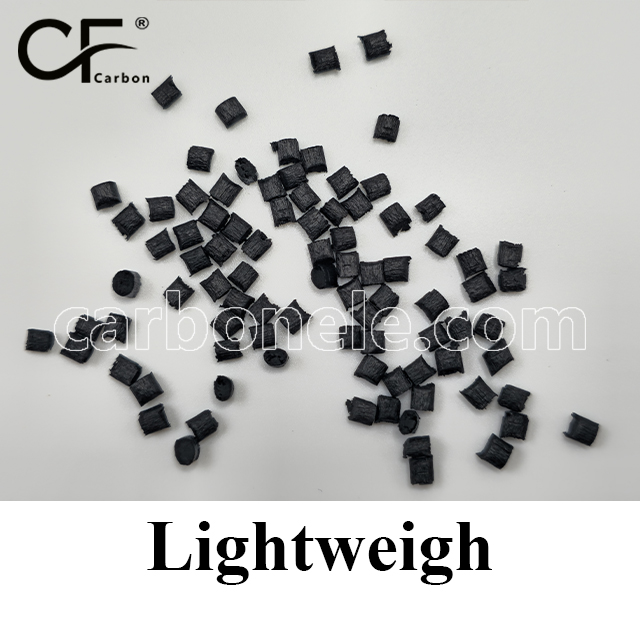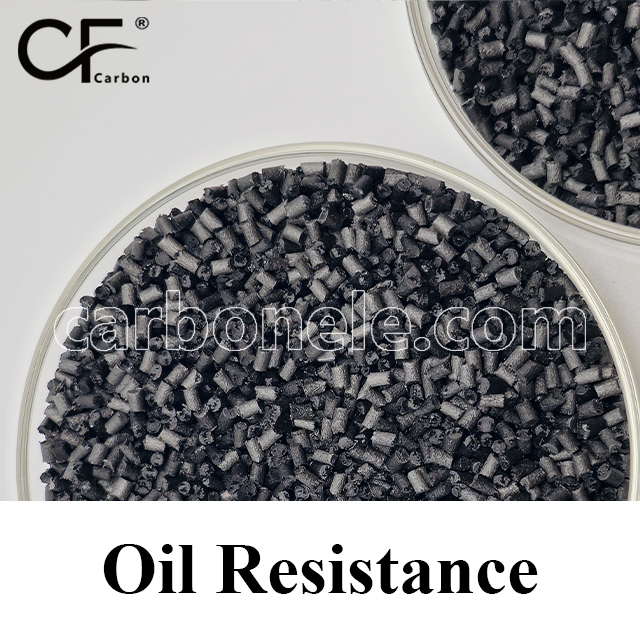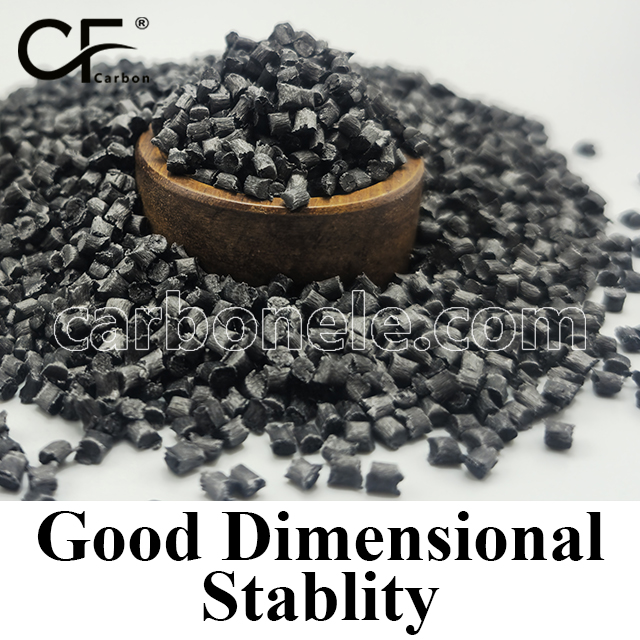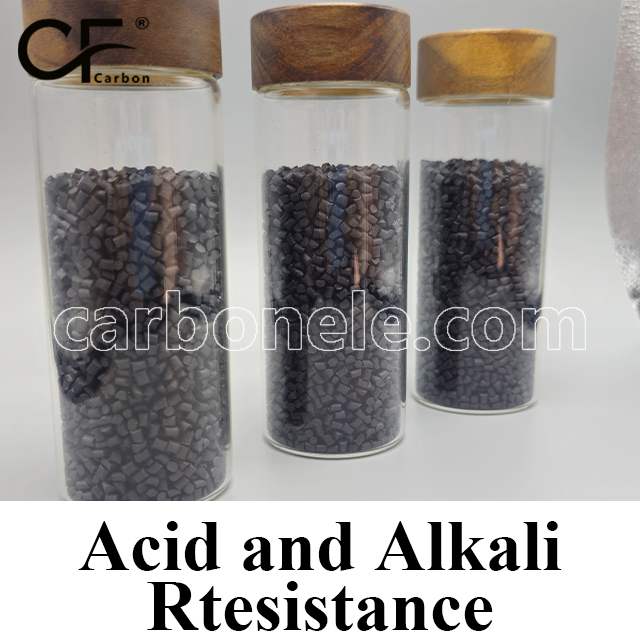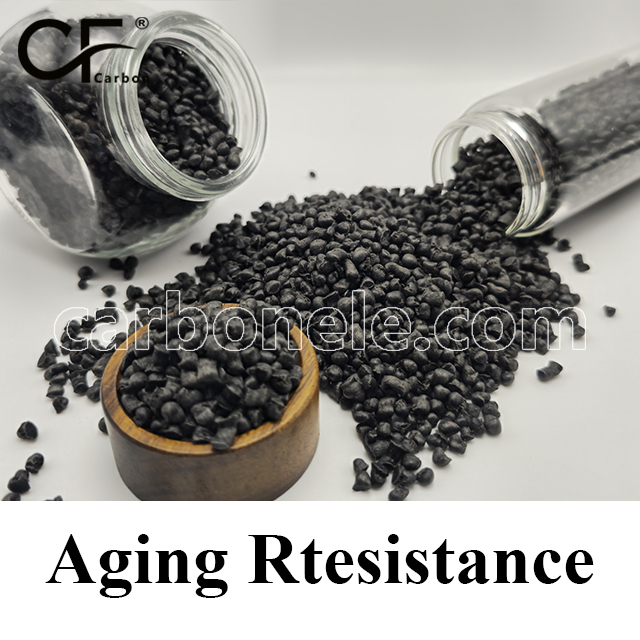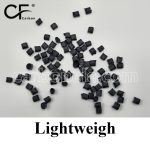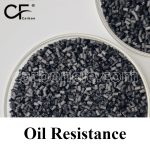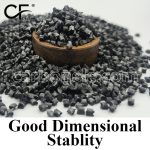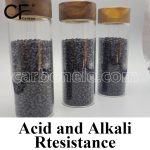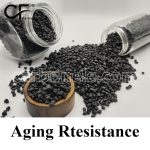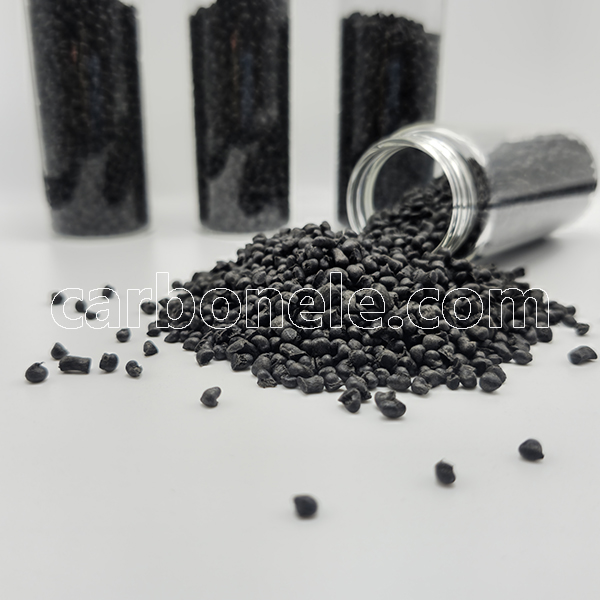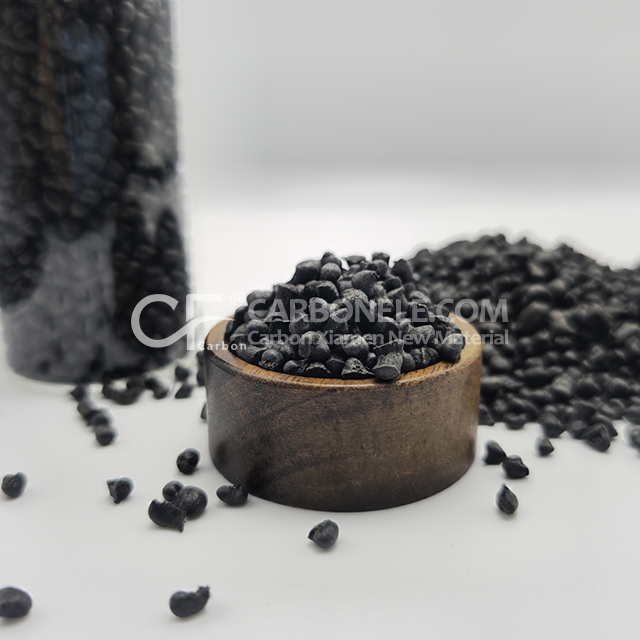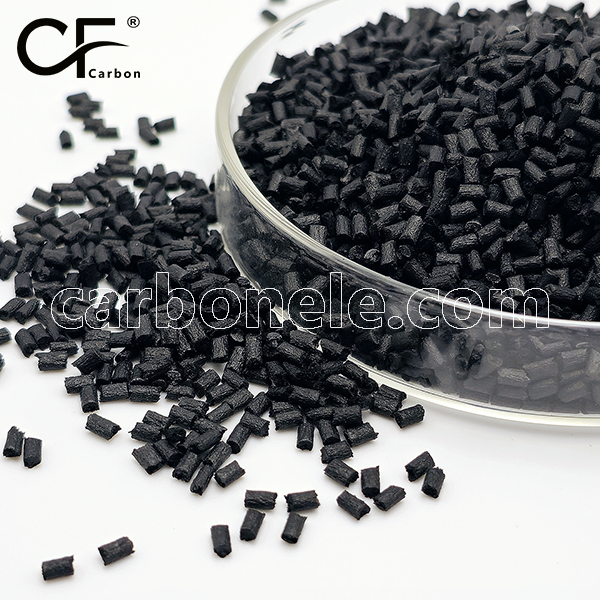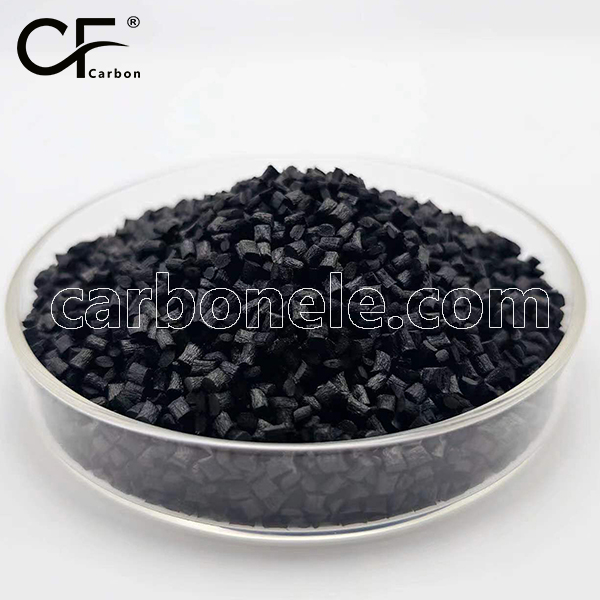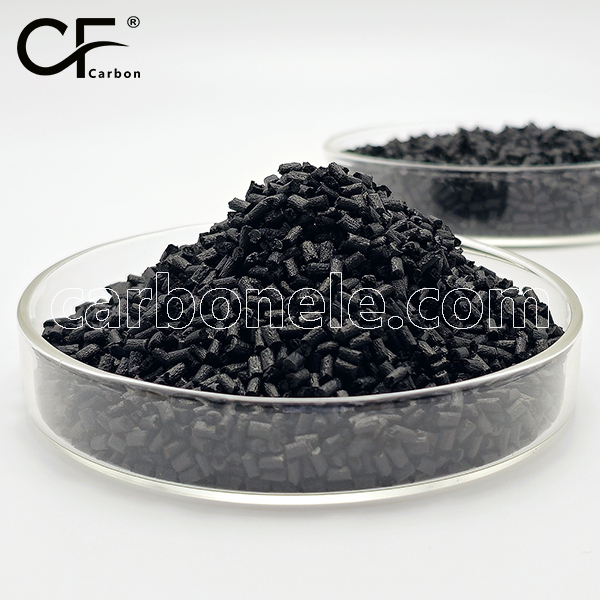PPA-CF40 is a high strength thermoplastic reinforced with 40% short carbon fiber, offering exceptional stiffness (~18 GPa), tensile strength (~200 MPa), and thermal resistance up to 240 °C. Ideal for metal-replacement in automotive, electronics, and industrial parts requiring maximum dimensional stability and chemical durability.

PPA-CF40 for High Load Parts
- Model number: PPA-CF-BCA4
- Matrix Resin: Personal Package Archive (PPA)
- Reinforcing Filler: Carbon fiber
- Appearance: Granules
- Grade: Injection/extrusion grade
- Packaging: 25kgs/bag
PPA-CF40 | 40% Carbon Fiber Reinforced Polyphthalamide
PPA-CF40 is an ultra high-performance, semi crystalline engineering thermoplastic reinforced with 40% short carbon fiber, engineered for maximum strength, rigidity, and dimensional stability in extreme mechanical, thermal, and chemical environments. With its very high carbon fiber content, PPA-CF40 offers metal like mechanical properties combined with the inherent chemical and heat resistance of polyphthalamide.
Compared to lower carbon fiber grades such as PPA-CF20 and PPA-CF30, this material exhibits significantly enhanced stiffness, creep resistance, and thermal dimensional control, making it ideal for structural parts subjected to high loads, elevated temperatures, or chemical exposure over long service life.
Core Performance Highlights
Mechanical Properties
Carbon Fiber Content: 40% (short chopped fibers, densely packed)
Tensile Strength: ~185–200 MPa
Flexural Modulus: ~17–18 GPa
Elongation at Break: ~0.6–1.0%
Notched Izod Impact: ~30–40 J/m
→ The 40% carbon fiber loading delivers exceptional rigidity and load bearing capability, suitable for metal replacement in structural and dimensionally demanding components.
Thermal Resistance
Heat Deflection Temperature (HDT): ≥ 280 °C
Continuous Use Temperature: Up to 240 °C
→ Withstands prolonged thermal stress without warping or creep, making it well suited for under hood, powertrain, and electrical insulation applications.
Environmental & Chemical Durability
Moisture Absorption: ~0.06–0.10% — extremely low for dimensional accuracy
Chemical Resistance: Outstanding — highly resistant to fuels, oils, acids, bases, coolants, and aggressive solvents
→ Provides excellent stability in humid, corrosive, or chemically reactive environments, with minimal degradation over time.
Processing & Manufacturing
Molding Methods: Injection molding
Surface Finish: Matte to textured, visible fiber appearance common
Tooling Requirements: Requires high hardness, abrasion resistant steel molds due to elevated fiber loading
→ Lower flowability than CF30; optimized mold design and processing conditions are essential to achieve full fiber alignment and mechanical performance.
Target Applications
Automotive & Mobility
Engine mounts, suspension brackets, electric drive housings
→ Provides high strength, dimensional accuracy, and chemical resistance for metal replacement applications in harsh environments.
Electronics & Electrical
Motor enclosures, battery carriers, structural EMI/RFI shields
→ Maintains rigid support structure under thermal and vibrational loads, ideal for EV and power electronics.
Industrial Equipment
Structural pump components, robotic arms, actuator frames
→ Suitable for continuous mechanical load, chemical contact, and high precision tolerancing.
Performance Summary Table
| Property | Value / Description |
|---|---|
| Carbon Fiber Content | 40% (Short Carbon Fiber Reinforced) |
| Tensile Strength | ~185–200 MPa |
| Flexural Modulus | ~17–18 GPa |
| Elongation at Break | ~0.6–1.0% |
| Notched Izod Impact | ~30–40 J/m |
| Heat Deflection Temp. | ≥ 280 °C |
| Long Term Service Temp. | Up to 240 °C |
| Moisture Absorption | ~0.06–0.10% — ultra-low, tight tolerance retention |
| Chemical Resistance | Excellent — fuels, oils, acids, bases, solvents |
| Wear Resistance | Very high — ideal for load bearing and high-friction zones |
| Processing Methods | Injection molding |
| Surface Finish | Matte/textured — fiber visibility common |
| Dimensional Stability | Exceptional — minimal creep, low thermal expansion |
If you want to get more information about PPA-CF40, you can visit our Youtube.
Strength between PPA and PPA-CF
PPA-CF (carbon fiber reinforced) offers significantly higher mechanical strength and rigidity compared to standard PPA. The addition of carbon fiber enhances tensile strength, flexural strength, and wear resistance, making PPA-CF more suitable for heavy loads and extreme environments. While standard PPA is suitable for medium-load and conventional applications, PPA-CF provides superior performance for more demanding industrial conditions.
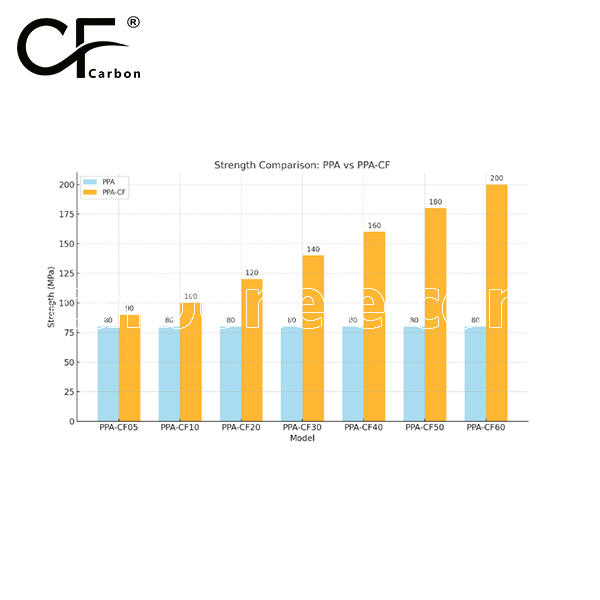
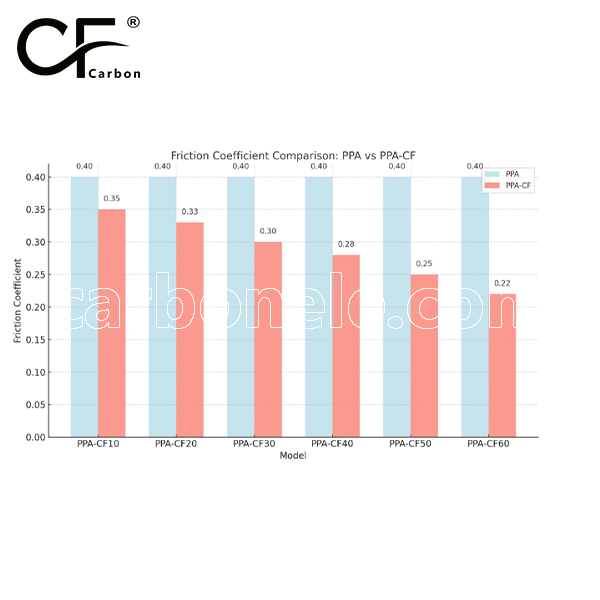

Frequently Asked Questions
Carbon (Xiamen) New Material Co., Ltd. aims to provide buyers with "one-stop" worry-free high-quality services. Here you can find all information about carbon fiber engineering plastics. If you still have questions, please send us an email for consultation!
-
How can I contact the manufacturer of a product that interests me?
When you find a product you are interested in, you can contact the manufacturer directly by sending an email and we will get back to you as soon as possible.
-
How do I find the products that interest me?
All you need to do is enter the keyword, product name in the search window and press the Enter key on your keyboard. Your search results page will then be displayed. You can also search within the product category pages on the home page. Each category is divided into subcategories, allowing you to refine your search and find products that interest you.
-
Where will I find a buying guide?
Please contact our after-sales service directly and we will provide you with a comprehensive operating guide.
-
What are CF Reinforced Thermoplastic Composites?
CF Reinforced Thermoplastic Composites are materials where carbon fibers are incorporated into a thermoplastic matrix. They combine the strength and stiffness of carbon fibers with the processability and recyclability of thermoplastics. For instance, they are used in automotive parts like bumper beams.
-
What are the benefits of CF Reinforced Thermoplastic Composites over traditional composites?
The key benefits include faster production cycles, easier recyclability, and better impact resistance. They also offer design flexibility. An example is in the manufacturing of consumer electronics casings where complex shapes can be achieved more easily.
-
How are CF Reinforced Thermoplastic Composites processed?
Common processing methods include injection molding, extrusion, and compression molding. Injection molding is widely used for mass production. For example, in the production of small components for the medical industry.
-
What industries use CF Reinforced Thermoplastic Composites?
They are utilized in aerospace, automotive, medical, and sports equipment industries. In aerospace, they can be found in interior components. In the medical field, they might be used in prosthetics.
-
How does the carbon fiber content affect the properties of the composites?
Higher carbon fiber content generally leads to increased strength and stiffness but may reduce ductility. A moderate content is often balanced for specific applications. For example, a higher content might be preferred in structural parts of a race car.
-
What are the challenges in using CF Reinforced Thermoplastic Composites?
Challenges include higher material costs, complex processing equipment requirements, and ensuring uniform fiber dispersion. Issues with adhesion between the fibers and the matrix can also arise. An example is in achieving consistent quality in large-scale production.







